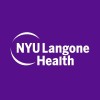
The Relationship of Multifidus and Gastrocnemius Muscle Thickness With Postural Stability in Patients...
StrokePostural; Defect1 moreThis study aims to investigate the relationship between multifidus and gastrocnemius muscle thickness with postural stability in patients with stroke.

Diaphragmatic Function Description in Stroke Patients
StrokeDiaphragmatic FunctionStroke is the leading cause of adult disability throughout the world. Motor function deficit is one of the common consequences. It is usually described for the peripheral muscles that there is a cortical representation contralaterale with a crossed cortico-spinal route: the consequence is a contralaterale motor disorder on the brain damage. The impact of a stroke on diaphragm movements have been described in 6 studies: however, they were all observational and transversal studies evaluating diaphragm function. Assessment using diaphragm thickness is another technique described in the literature. Visualization of diaphragm in the zone of apposition allows to assess diaphragm thickness at inspiration and expiration. The impact of a stroke on diaphragm thickening has been reported in only one recent observational study. It seems that diaphragm would be damaged after a stroke, but unilateral or bilateral dysfonction is yet to be confirmed. Moreover, only a few measurements were performed in these studies, and not a diaphragm function follow-up.

Clinical Trial to Evaluate the Safety of Continuous IV Tirofiban in Acute Ischemic Stroke
Acute Ischemic StrokeIschemic StrokeWe will recruit men and non-pregnant women of any ethnic background between the age ≥ 18 and ≤ 90 years that have acute ischemic stroke and underwent Mechanical Thrombectomy (MT) with TICI 2b or 2b following MT. These subject's will be will be randomized to placebo vs. Tirofiban after consent is obtained. This will be administered via continuous IV starting within 60 minutes of MT procedure completion. At the end of the 24 hour continuous IV dosing period a CT angiography and CT perfusion (CTA/CTP) will be obtained. The rest of the subjects inpatient hospital stay will be done per standard of care. The subject's NIHSS and modified Rankin Score (mRS) will be assessed at 90 days.

Turning Performance in Stroke
StrokeTurning is a challenging task for stroke patient. Previous studies showed that turning is one of the activities which resulting in falling frequently in stroke. However, the assessment tool of turning performance is still lack of reliability and validity. Furthermore, the main factors which affected turning ability in stroke are not approved yet.

The Use of Hyperbaric Oxygen to Increase the Blood Supply in the Injured, But Still Alive Tissue,...
Ischemic Cerebrovascular AccidentTo confirm or refute recently published data regarding the reduction in post-stroke ischemic penumbra, that used SPECT/CT, by using the more precise tools of PET/MRI.

Cognitive & Motor Training After Stroke For Everyday Walking Restoration
StrokeThe purpose of this study is to test a unique, combined cognitive and motor intervention designed to restore safe, more normal coordinated gait components into the real world environment for individuals with stroke.

Laryngeal Adaptation for Speech and Swallowing
StrokeSpinocerebellar Ataxia3 moreThis study will test laryngeal adaptation in speech and swallowing function in healthy adults, in patients with cerebral stroke, and in patients with spinocerebellar ataxia type 6. The findings from this proposal will be the first step toward implementing rehabilitation techniques that help patients to prevent speech and swallowing errors before they occur.

Effectiveness of Modified Constraint Induced Movement Therapy to Improve Lower Extremity Function...
StrokeThis is a prospective randomized control trial of patients with unilateral impairment of the lower extremity after stroke. Patients will be randomized to intervention group and control group. Intervention group will receive one hour of intense massed practice of lower extremity either in the form of shaping or task practice. Control group will receive conventional physical therapy for 1 hour as per current standard of care that follows stroke clinical practice guideline.

rTMS and Physical Therapy as a Clinical Service for People With Stroke
StrokeThe purpose of this study is to determine the characteristics that distinguish responders from nonresponders in people with stroke receiving rTMS combined with physical therapy to improve hand function. Investigators hypothesize that those who improve the most will be characterized by larger evoked brain signals in the stroke hemisphere and lower scores on the Beck Depression Inventory indicating less depression. Medications, sex, age, type of stroke, location of stroke, duration of stroke and baseline hand function will also be compared.

Impact of Hip Flexors Isokinetic Strengthening on Gait Capacities in Subacute Stroke Patients
StrokeHemiplegia1 morePost-stroke patients often present with gait disorders due to several physical impairments. Hip flexor deficit is one of the more prevalent trouble and is associated with gait capacities. This study aims at evaluating the impact of an isokinetic hip flexors strengthening rehabilitation program in the subacute phase after stroke. Patients will be randomized to an intervention group (isokinetic rehabilitation) or a control group (conventional rehabilitation) and assessed at the end of the rehabilitation program, at 3 and at 6 months.
